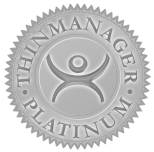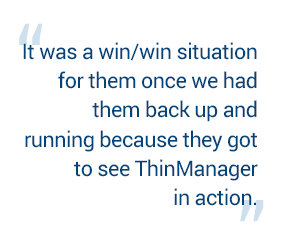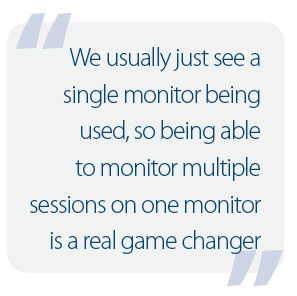



PREMIER System Integrators
premier-system.com
140 Weakley Lane
Smyrna, TN 37167
Phone: 615.355.7200
Founded in 1991 to provide turnkey system integration services for manufacturing facilities in the southeast, PREMIER System Integrators, Inc. has grown to be a multifaceted organization providing a wide range of services to manufacturers across the U.S. From its headquarters in Smyrna, TN, about 20 miles southeast of Nashville, PREMIER offers panel fabrication, consulting, outsourcing, recruiting, and other services in addition to its core business of industrial controls and factory information systems integration.

The consumer goods packaging industry accounts for more than $2 trillion dollars in annual revenue and is spread across a wide range of applications. From fast food containers, to paperboard and plastic containers of any shape and size, to molded fiber flatware, these are the products that people worldwide use on a daily basis.
The systems used to run this industry are as varied as the companies that manufacture them. When a global leader in consumer goods packaging and molded fiber products wanted to overhaul their factory information systems and industrial controls with a consistent system that could be deployed across their 13 facilities in North and South America, they called on PREMIER System Integrators.
Established in 1991, PREMIER System Integrators has grown to be a multifaceted organization specializing in creating superior solutions for manufacturing environments in need of complex system integration to keep them at the forefront of their industry. By consistently providing excellence in industrial controls, they continue to grow and flourish due to their ability to create efficient systems for complicated deployments.

Before designing a new state-of-the-art system for their client, PREMIER had to determine what system architectures were currently in place at the three target facilities. They determined that all three had slightly different systems, one being a Valmet DCS system, one a ProcessLogix-DCS System and the last was a more classic RS View32 HMI with Control Logix. The OS on the Valmet was proprietary with thick clients, the OS for the HMIs were all Windows 2000 with thick clients, and the RSView32 systems were using Windows XP.
PREMIER was asked by the client to help provide justification for the control system upgrades. The ProcessLogix system was discontinued so the system was at end of life, as was the Valmet system. Although the controls in the third facility weren’t obsolete, the client wanted the same look and feel across all three facilities to simplify operations and maintenance.
Once the projects were approved, PREMIER System Integrators got to work designing and deploying the most agile and advanced system they could create. After much consideration, they decided on a multi-tiered system using a combination of the most recent releases from Rockwell, VMware, and ThinManager. All 3 facilities now have Rockwell PAx Solution using ControlLogix for the control layer. The HMI layer is FactoryTalk View SE, and the clients are being managed with ThinManager. There were existing fiber KVM switches that were replaced with ThinManager ready thin clients allowing reuse of the fiber optic cable at the third location. In all cases they are using redundant FactoryTalk ViewSE HMI servers with OSI PI as the historian. They all have three physical machines with virtually hosted OSs and two redundant FactoryTalk View SE servers that are also ThinManager servers. They can RDP into that infrastructure and have access to an Asset Center server, which is how they get to the equipment for facility to facility corporate remote support.
With so many software choices between their three HMIs, they decided to use parts of each to maximize efficiency. From the ThinManager Platform, PREMIER decided to use the MultiMonitor function and Touch Screen Support to provide operators with the ability to watch more than one process at a time. They also relied heavily on Shadowing throughout the early phases of development and after initial deployment because they had the ability to VPN into their sites remotely. They saw the value in being able to view an operator’s screen to see their session in real time and even take control of their screen if needed to walk them through a process.
After such a massive undertaking, we asked Larry Grate of PREMIER what his thoughts were about ThinManager now. “From an ease of maintenance and support perspective, going with a configured ThinManager ready thin client solution makes it a lot easier to replace a client in the middle of the night when one fails. Maintenance and support were really the driving force behind our decision to use the ThinManager solution for this deployment. Once it was up and running, the customer immediately saw the value and versatility of the product. They are now looking at incorporating additional ThinManager Platform features like IP camera support in future projects. We had a little resistance to putting ThinManager in until we dropped in that first client. It took them having a difficult situation that we were able to get them out of using ThinManager to make them believers. They had a thick client failure and didn’t have a quick way to get another one in. In order to get them back up and running it was easier for us to get a ThinManager thin client installed rather than trying to swap out the thick client. It was a win/win situation for them once we had them back up and running because they got to see ThinManager in action. They are now retooling their entire facility to ThinManager.”
Regardless of the industry or the system architecture, the ThinManager Platform makes system management more efficient.
REMIER Systems Integrators is a trend setting integration organization with more than 20 years experience creating custom system management networks for automated industrial facilities. They recently completed a project that was massive in scope, size, and complexity for a global leader in steel manufacturing…and once again, they used ThinManager to tie it all together.
At a total cost of more than $1.4 billion dollars, the newly expanded facility they were tasked with modernizing employs 650 people and produces more than 6 million net tons of steel each year.
Because of the size of the project and harsh environment, which includes electric arc furnaces, ladle furnaces, slab casters, a strip mill, and hot dip lines, there were many factors to consider before implementation. The facility has both a hot side and a cold side so they had to stay flexible with their architecture and deployment of hardware. The customer needed to have as few people on the production deck as possible, especially around the furnace, because it is such a safety hazard.

The basic hardware system design has thin clients running the HMI applications from a pair of virtual Terminal Servers, which are retrieving the I/O information from the PLCs. Most of the thin clients are located in the furnace control room, with a few others deployed in other locations to enable remote monitoring. There are two physical servers with all the Wonderware objects on one server while the other is being used as a redundant backup. In addition, they have a virtual domain controller and a virtual historian using the Wonderware Historian.
With so many different areas and systems, PREMIER decided to use ThinManager to manage the thin clients and make the environment more efficient for the employees. They needed to deliver eight different HMI applications that are spread throughout the facility to more than fifteen thin clients. Some of them are being used to run multiple sessions of the same applications. Most of them use the ThinManager MultiMonitor feature because they have a lot of processes happening at the same time, so the operators and engineers usually have multiple sessions running. Some even use a workstation where they have a virtual machine built for the maintenance staff to be able to troubleshoot. They have six IP cameras on one of the MultiMonitor systems that they keep pulled up and switch between that session and a Terminal Shadow that shadows a station in a pump house which is unmanned so they can monitor those cameras and use Terminal to Terminal Shadowing to switch between that and the pulpit in the furnace where they monitor the water system. This eliminates the need to have two sessions running at two stations when one of them is always unmanned.
The customer was quick to appreciate the value ThinManager brought to their system management. But we wanted to know what PREMIER Systems Integrators thought was the most useful feature in their newly designed system architecture. “We think the MultiMonitor feature that allows multiple sessions to be on one screen is great. To be able to monitor the PLCs and troubleshoot problems in real time is extremely useful. This is the first time we have really used MultiMonitor that way. We usually just see a single monitor being used, so being able to monitor multiple sessions on one monitor is a real game changer,” said Larry Grate, Senior Engineer for PREMIER System Integrators.
Regardless of the environment or the scope of the project, the ThinManager Platform continues to impress both integrators and customers with its efficiency and ability to reduce mean time. And with each successful deployment, the reputation of “The Power of Thin” continues to grow.